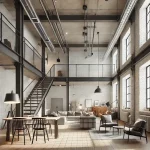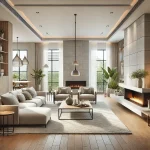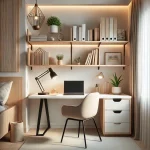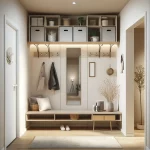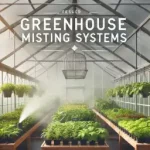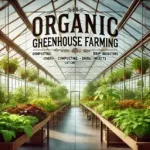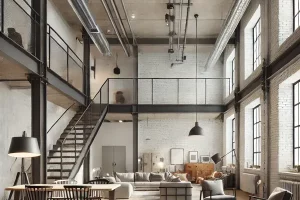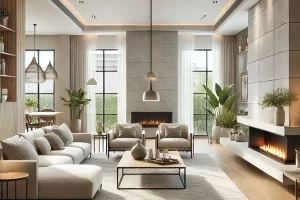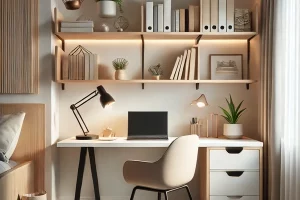Hey there, ever heard of a greenhouse design? It’s this awesome space where you can grow plants all year round! Yep, you heard right: whether it’s snowing or super hot outside, plants in a greenhouse are always cozy and happy.
But wait, there’s more! People are finding all sorts of new ways to use greenhouses. Besides growing plants, they’re being used to keep food fresh for a longer time and even to keep animals warm. So, it’s not just a plant paradise; it’s a multi-use haven!
What Is a Greenhouse Design?
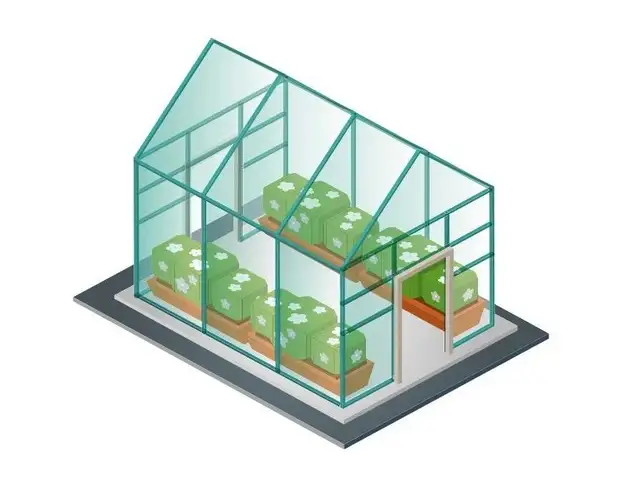
A greenhouse design is a plan that shows how a greenhouse will be built. It helps make sure the plants inside get the right amount of light, warmth, and air.
What are two different greenhouse designs?
Frame Greenhouses
What They’re Made Of: Frame greenhouses usually have a frame made from metal, wood, or plastic. On top of that, they put a special plastic sheet or sometimes even glass.
Benefit:
- Easy to Build: These are usually easier to set up than other types. You can even do it yourself!
- Cheaper: They often cost less money to build. That’s great if you’re starting.
- Flexible: You can make them in lots of sizes, from really tiny to super big.
Geodesic Greenhouses
Unique Design: These greenhouses look like a bunch of triangles put together. They’re really strong and can hold up to things like wind much better.
Benefit:
- Better Air: The shape helps the air move better.
- Keeps Heat: The design is really good at keeping the warm air inside.
- Looks Cool: Because of the unique design, these greenhouses can look really neat.
What are the key features of a greenhouse design?
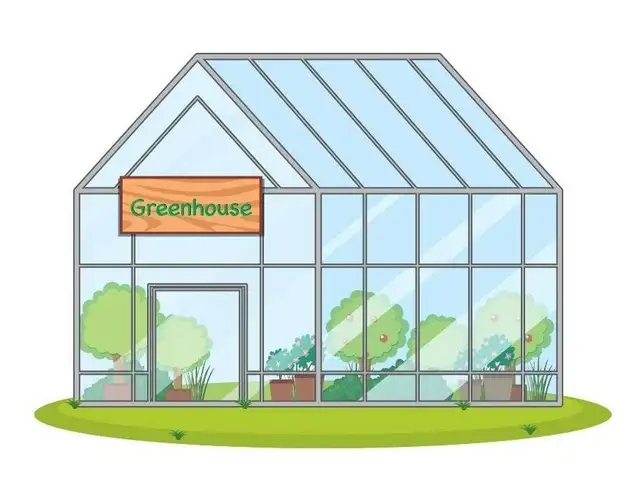
Designing a greenhouse isn’t just about putting up some walls and a roof. Here are some key things you’ll need to think about:
Importance of Transparent Material for Sunlight
- Let the light In: Plants need sunlight to grow. So, your greenhouse needs to be made of a material that lets lots of light in.
- Choices: Materials like glass and clear plastic are popular choices because they let in a lot of light.
Climate Control Systems
- Heating: Even a sunny greenhouse can get chilly.
- Air Circulation: Plants need fresh air to stay healthy. Fans can help move air around.
- Humidifier and Dehumidifier: Plants need the right amount of water in the air. Too little, and they dry out. A humidifier adds moisture to the air, and a dehumidifier takes it away.
Importance of Ventilation
- Let It Breathe: Plants give off water vapor, which can make your greenhouse muggy. Vents or fans can help get rid of extra moisture.
- Cooling: In the summer, a greenhouse can get too hot.
Climate Control Systems in Greenhouses
Various Climate Control Systems Used
- Heating Systems: When it’s cold, we need to make the greenhouse warm. We can use gas heaters or even ones that use the sun’s power!
- Cooling Systems: Sometimes it gets too hot. We can use machines that make the air cooler.
- Ventilation: We can open or close these to let in fresh air. Some even work all by themselves!
- Humidifiers and Dehumidifiers: Sometimes plants need the air to be wetter or drier. Machines can add or take away water from the air.
- Lighting: Some plants may require additional light, especially during the winter months. LED or fluorescent lights are often used for this purpose.
- Automated Systems: These are really cool machines that can check the air and make changes all by themselves. You can even control them with your phone!
Importance of Sustainable and Caring Greenhouse Systems
- Energy Efficiency: Things like sun heaters or special lights use less power. That’s good for the Earth and saves you money.
- Water Conservation: We can use systems that use rainwater or recycle water. It’s a smart way to use less water.
- Non-Toxic Materials: It’s good to use things that aren’t harmful to plants or the Earth.
What is the best material to use for a greenhouse roof?
Glass Greenhouses
Materials Used: Glass panels, metal, or wood for the frame.
How to Build:
- Set Up Frame: First, you’ll need to build a frame.
- Add Glass: After your frame is up, you’ll attach glass panels to it.
- Seal It: You’ll need to make sure all the glass panels are sealed so no air gets in or out.
Why Use Glass:
- Clear View: The glass is super clear, so lots of light gets in.
- Sturdy: Glass is strong, but it can break, so be careful!
Polycarbonate Greenhouses
Materials Used: Polycarbonate sheets, metal, or plastic for the frame.
How to Build:
- Frame First: Like with glass, you’ll start with a frame.
- Attach Sheets: Polycarbonate sheets are lighter than glass, so they’re easier to attach to the frame.
- Check Work: Make sure everything is attached well so it doesn’t come apart later.
Why Use Polycarbonate:
- Lightweight: Easier to work with because it’s not heavy.
- Less Breakable: Unlike glass, it’s easier to break.
PVC Greenhouses
Materials Used: PVC pipes, plastic sheeting.
How to Build:
- Lay Out Pipes: You’ll start by laying out your PVC pipes in the shape you want.
- Connect Pipes: Use connectors to make the frame.
- Add Plastic: Finally, you’ll put plastic sheeting over the whole thing.
Why Use PVC:
- Super Cheap: This is often the cheapest way to make a greenhouse.
- Easy to Change: If you want to make it bigger or smaller later, it’s easy to do.
How much does it cost to build a large greenhouse?
Building a greenhouse can cost a little or a lot. Here are some things that can make it cost more or less:
- Size: Bigger greenhouses will cost more than smaller ones.
- Materials: Stuff like glass and metal cost more than plastic or wood.
- Extra Stuff: If you want special things like a heating system or fancy doors, that will cost extra.
- Doing it Yourself: If you can build it yourself, you’ll save money. But if you have to pay someone, it will cost more.
What are the benefits of building a greenhouse?
Here’s why building a greenhouse is awesome:
Year-Round Produce
- Always in Season: With a greenhouse, you can grow fruits and veggies all year long. No more waiting for summer to get fresh tomatoes!
- Beat the Weather: Bad weather will be good for your crops. Your greenhouse keeps things growing, come rain or shine.
Environmentally Friendly
- Less Waste: Growing your food means fewer trips to the store and less packaging waste.
- Save Water: Many greenhouses let you collect and reuse water, so you use less.
- Lower Carbon Footprint: Less transportation of food means fewer carbon emissions.
Personal Food Production
- Know What You Eat: When you grow it yourself, you know what goes into your food. No more worrying about pesticides or where your food comes from.
- Taste the Difference: Freshly picked produce tastes better. Plus, you can grow special varieties you can’t find in stores.
What are the disadvantages of building a greenhouse?
While greenhouses offer a lot of perks, they could be better. Here are some things to think about if you’re considering building one:
Need for Artificial Lighting in Glass Greenhouses
- Power Costs: Glass greenhouses often need extra light, especially during shorter days.
- Not Natural: Plants do best with natural light. Artificial light can sometimes mess up a plant’s growth cycles.
Maintenance
- Time-Consuming: Greenhouses need regular cleaning and repairs. Broken glass, torn plastic, or rusty frames need fixing to keep the greenhouse effective.
- Daily Checks: You’ll need to check temperature and humidity levels every day to make sure they’re right for your plants.
Space Requirements
- Big Footprint: A greenhouse can take up a lot of room.
- Local Rules: Some places have rules about building structures like greenhouses. Make sure to check local laws first.
Costs
- Expensive to Build: The cost of materials and construction can add up quickly, especially for larger or more specialized greenhouses.
- Running Costs: On top of that, there are costs for heating, lighting, and water.
Environmental Impact
- Energy Use: If you’re careful, the energy used from heating and lighting can help the environment.
- Water Use: Greenhouses can use a lot of water, especially in warmer climates.
How much land is needed for a large greenhouse?
Large greenhouses are big structures attached to a building or free-standing, with many types of plants inside.
Large greenhouses need more land than small ones. The amount of land they need depends on the shape and size of the greenhouse. It also depends on what plants you grow inside it.
How much power does a typical greenhouse generate?
The power generated by a typical greenhouse depends on the size of the structure, design, and insulation.
A typical greenhouse generates a lot of power. The amount of power generated can range from 10 to 100 watts per square foot.
Is it possible to use solar panels in a greenhouse?
Solar panels are a great way to generate electricity. They are also a great way to reduce the environmental impact of your greenhouse.
However, it is only sometimes possible to use solar panels in a greenhouse because they require an open space with direct sunlight.
What is the necessary ventilation for a greenhouse?
The necessary ventilation for a greenhouse is dependent on the size of the structure and the type of plants that are being grown.
Maintaining the Greenhouse Environment
Taking care of the environment inside your greenhouse is super important. Let’s break it down:
Temperature
- Setting It Right: The temperature in your greenhouse needs to be just right. Too hot, and your plants will dry out. Too cold, and they might freeze.
- How to Control: Use a thermostat to keep an eye on the temperature.
Humidity
- Why It Matters: Plants need moisture in the air, but not too much. If the air is too wet, mold can grow. If it’s too dry, plants can get sick.
- How to Control: Use a humidifier to add moisture or a dehumidifier to take it away. Make sure also to have vents or fans to keep the air moving.
Light
- Sunlight Needs: Plants need light to grow. Make sure your greenhouse lets in lots of sunlight.
- Artificial Light: If you don’t get enough natural light, you can use grow lights.
Water
- How Much?: Plants need water, but not too much or too little.
- Irrigation: Some people use automatic watering systems to make sure plants get just the right amount. You can also water by hand, but be consistent.
Conclusion
Greenhouses are like magic boxes for growing things. They let farmers grow food all year, even when it’s super cold or hot outside.
But it’s not just for big farms. Anyone can have a greenhouse in their yard.
FAQs
What Are the Key Features in a Greenhouse Design?
The biggies are:
- Transparent Material: You want lots of sunlight to come in.
- Climate Control: This means having a system to heat and cool the air, move it around, and control humidity.
- Ventilation: Plants need fresh air, so having windows or vents is crucial.
What Types of Materials Are Used in Greenhouse Design?
The common materials are glass, polycarbonate plastic, wood, and PVC.
Can I Customize My Greenhouse?
Absolutely! You can add special features like extra windows, shelves for plants, or even a watering system.
What Are the Different Types of Greenhouses?
The two main types are:
- Frame Greenhouses: These have a frame made of metal, wood, or plastic.
- Geodesic Greenhouses: These are shaped like a bunch of triangles and are super good at keeping heat in.
How Important Is Ventilation in a Greenhouse?
Super important! Plants give off water vapor that can make the air inside very humid. So, you’ll need a good ventilation system to let that extra moisture out.
How Do I Choose the Right Roof Material?
Glass is great for letting in light but can be pricey. Polycarbonate is cheaper and good at keeping heat in but might let less light through.
How Much Will It Cost to Build My Greenhouse?
Costs can vary a lot depending on the size and materials you choose. It could be just a few hundred dollars for a small one or tens of thousands for a big, fancy one.
How Do I Make My Greenhouse More Eco-Friendly?
You can use solar panels for energy, collect rainwater for watering plants, and use recycled materials for construction.
Can I Build a Greenhouse Myself?
Yes, if you’re handy with tools, you can build a simple greenhouse yourself.
